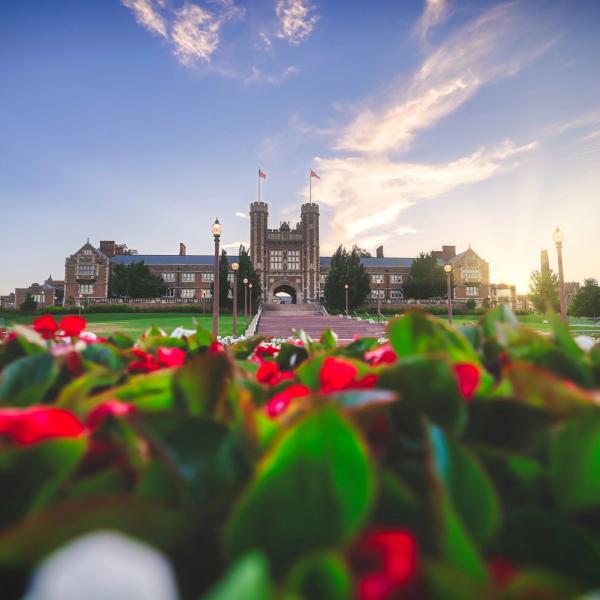The exhibition HT94, which documents the migrant crisis along the U.S.–Mexico border, returns to campus August 21. Organizers Tabea Linhard and Mattie Gottbrath share why the installation's message is more poignant than ever.

For much of the past year, public health officials have urged Americans to shelter in place and avoid travel. An exhibit depicting the scale of the migrant crisis in the United States demonstrates just how much of a privilege staying home can be.
“People haven’t stopped moving during the past year and a half,” said Tabea Alexa Linhard, professor of Spanish, comparative literature, and global studies and one of the co-organizers of “Hostile Terrain 94” (HT94), which will soon be on display at Washington University. “Some of us have the luxury of staying at home, but the majority of people in the world do not have that luxury.”
“Hostile Terrain 94” returns to WashU August 21 for an installation at the Mildred Lane Kemper Art Museum. Co-organized by Linhard and Mattie Gottbrath, coordinator for international programming in Global Studies, HT94 is the St. Louis iteration of a global pop-up exhibition that is composed of thousands of handwritten toe tags representing migrants attempting to cross the Sonoran Desert of Arizona between the mid-1990s and 2019.
After being displayed at the Danforth University Center this spring, HT94 traveled to Saint Louis University and now back to WashU’s Kemper Art Museum. Yet the first installation was the act of putting the exhibit together.
“A large part of the exhibit itself is the process of constructing it,” said Gottbrath. Each toe tag had to be filled out by hand, a time-consuming and emotionally heavy task undertaken virtually and in-person by WashU students, faculty, staff, and members of the St. Louis community. “While the completed project has been exhibited in two locations so far, the number of communities that interacted with it in-process has been much greater,” she said.

In a year when physical gatherings were replaced with virtual contact, the tactile nature of the project proved to be especially meaningful to participants. “In our virtual world, we almost never use our hands, this past year and a half more than ever. The physical and repetitive action of writing something down ended up being an integral part of the experience this year for us,” said Linhard.
Like many across the U.S., Linhard and Gottbrath watched the border crisis increase in severity from their homes as COVID made the situation direr. They said that the crisis felt both more distant and closer to home as they watched from the safety of their own homes.
“The border is so far away from St. Louis, and the act of putting the exhibit together brought it here,” Gottbrath explained.
As they reflect on the past year of HT94 in St. Louis, Linhard and Gottbrath believe that the message of the exhibit is more poignant than ever. The exhibit depicts deaths in Arizona through 2019, but the circumstances in which the installation was assembled and displayed highlight the impact that the pandemic has had on migrants in the U.S.
“The exhibit portrays this situation where people are pushed into more dangerous terrain where they will probably suffer trauma or lose their lives, and that situation did not end when the exhibit was designed. A combination of closed borders and people still being in detention centers when COVID began spreading more widely has meant that things have only gotten worse.”
Linhard and Gottbrath are organizing a closing event on September 17, when they plan to commemorate the lives lost as they package some of the toe tags to be sent back to Los Angeles where the exhibit originated.
“Hostile Terrain 94” is on display at the Kemper Art Museum August 21–September 3 in the May Department Stores Foundation Foyer. A panel discussion with Linhard, Gottbrath, and Ila Sheren, associate professor of art history and archaeology, will take place on September 2 at noon at the Ann and Andrew Tisch Park in front of the Museum. The exhibit is sponsored by Global Studies, American Culture Studies, the Department of Art History & Archeology, the Department of Romance Languages & Literatures, all in Arts & Sciences, and the Office of the Vice Provost for Faculty Advancement and Institutional Diversity. More information can be found at the Hostile Terrain website and at the Kemper Art Museum website.




